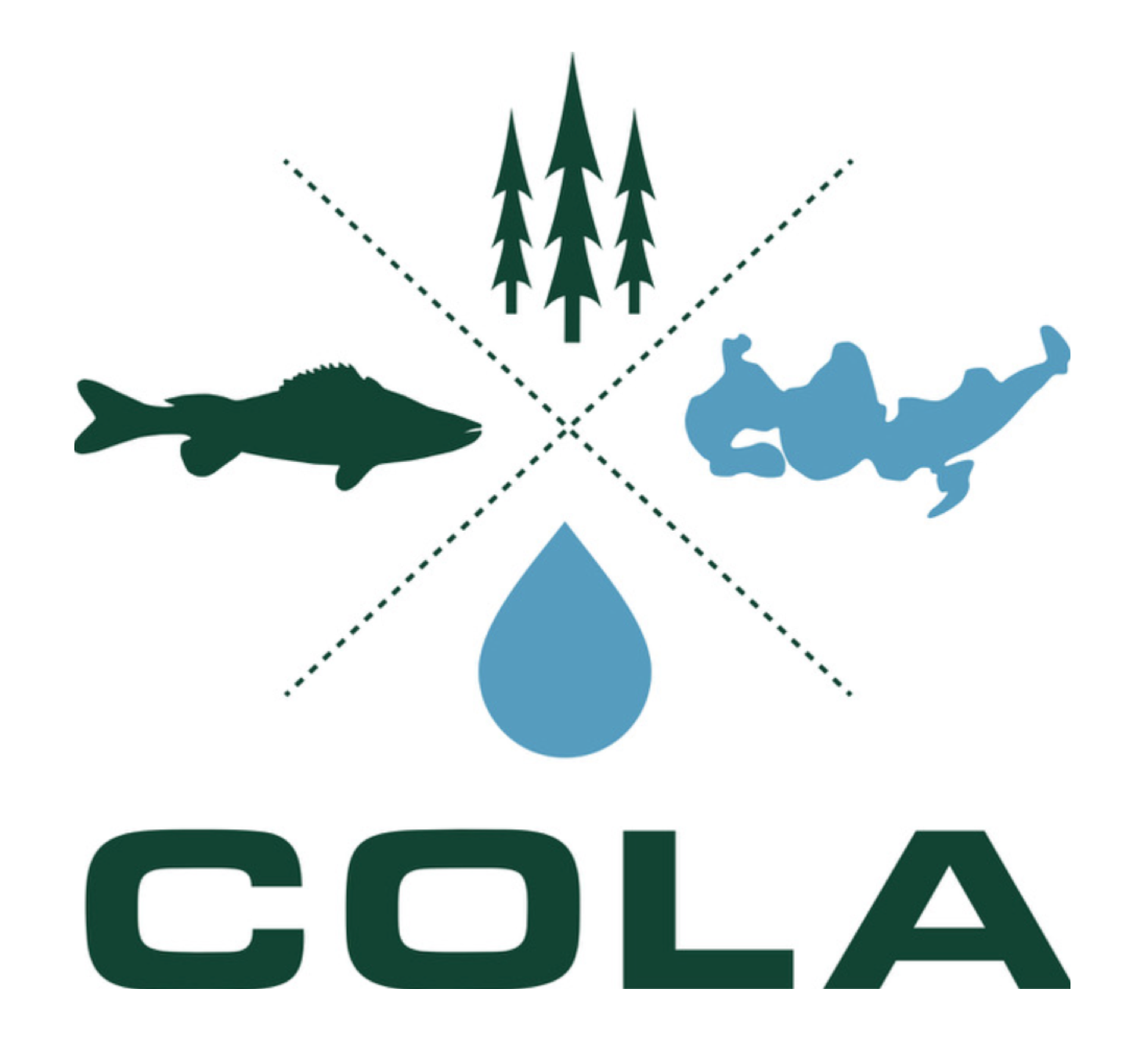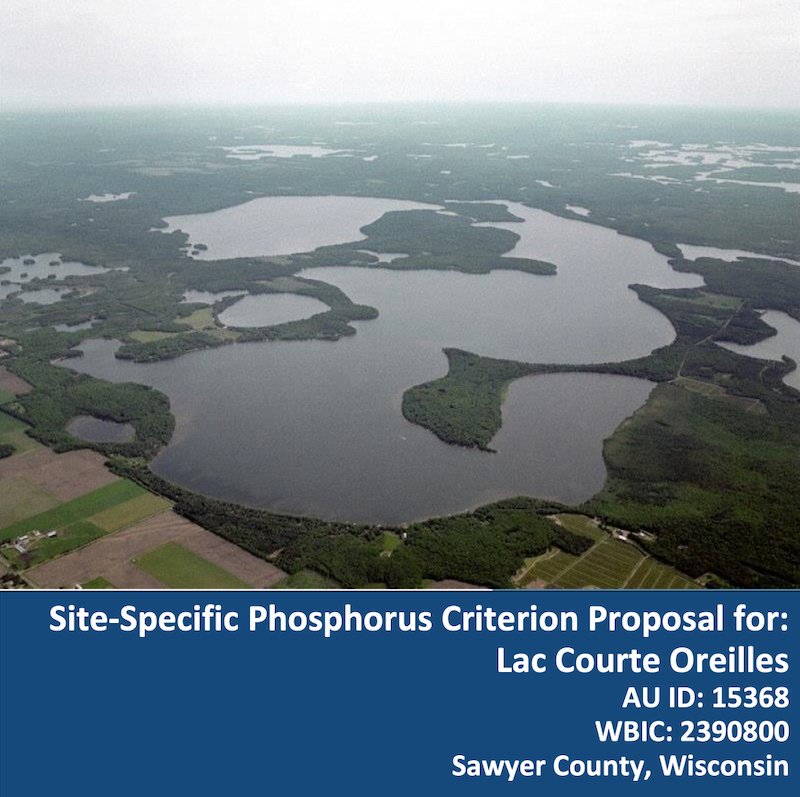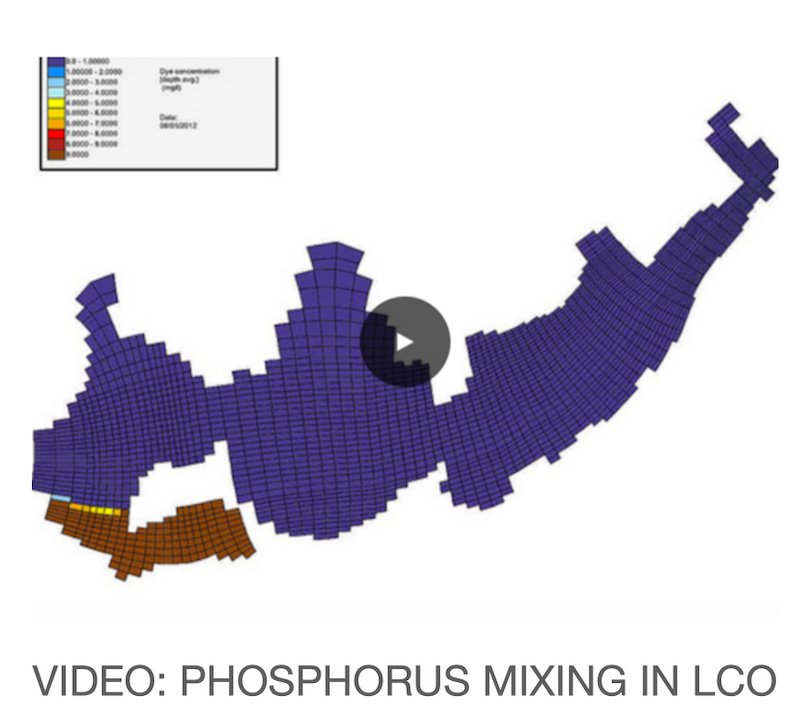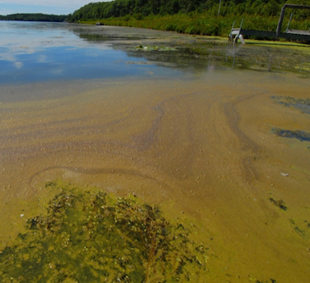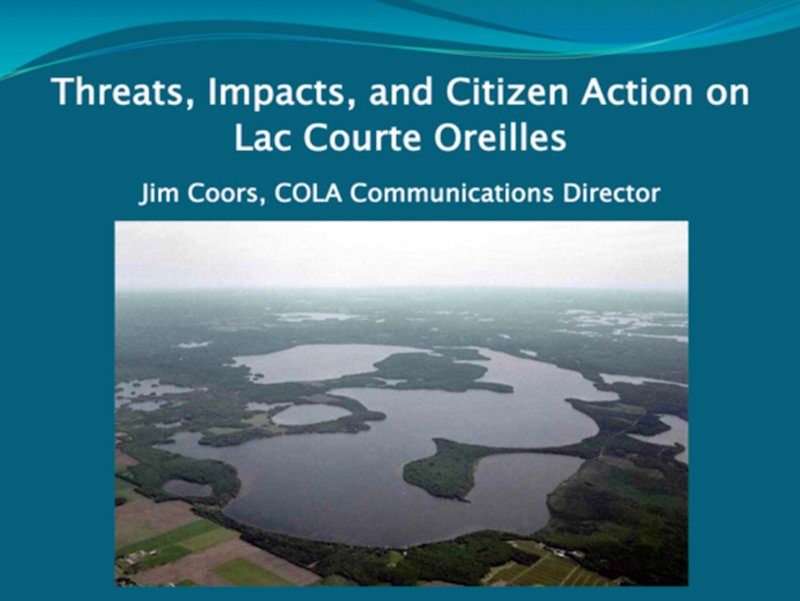Phosphorus and water-quality impairment
Nearly all the challenges facing the LCO lakes relate directly to deteriorating water quality caused by excessive nutrients, especially phosphorus, which has increased dramatically over the last several decades. All parts of the 73,000 acre Upper Couderay River watershed, including agriculture, forestry, and private and public lands, contribute to the problem through uncontrolled drainage, runoff, and erosion. Lac Courte Oreilles is at the base of the watershed, so it bears the burden of all the mismanagement upstream as well as that on its own shores. Of particular concern are the cranberry operations on LCO’s shores that are responsible for a significant proportion of the readily-controllable phosphorus flowing into LCO, but they lack motivation to do much about it.
What COLA is doing about it
The effort to protect Lac Courte Oreilles is backed by the best science available. COLA has partnered with established, independent experts in the fields of limnology, water conservation, and land and soil resource management. Examples include:
Water Quality Studies
COLA funded the first study of water quality on LCO in 1994 (the BARR study) to establish a baseline nutrient evaluation. The Barr study was the first on LCO to point out that cranberry marshes are the single largest readily-controllable source of phosphorus pollution to LCO. This was confirmed in a subsequent Total Maximum Daily Load (TMDL) study performed from 2011 thru 2014. The new 2024 WisCALM Water Quality Assessment provides the most recent summary of phosphorus, clarity, chlorophyll a and fish habitat.
Septic Survey
COLA provided funding to assist Sawyer County for a summer intern to conduct a septic survey to complement the TMDL study. Lake septic surveys are intended to find septic systems that are not properly treating wastewater, ultimately impacting water quality of nearby lakes and/or causing environmental or health concerns. Nearly all septic systems on LCO were brought into compliance because of this survey.
Site Specific Criterion for Phosphorus
The site-specific criterion (SSC) of 10 μg/L for phosphorus for Lac Courte Oreilles was approved by the Wisconsin State Legislature following the recommendation of WDNR’s Natural Resources Board and Governor Evers. COLA and the LCO Tribe have been working with the WDNR since 2016 to establish a lower phosphorus standard, termed a “Site Specific Criterion” (SSC), for the LCO lakes (excluding Musky Bay). Protection is ineffective using the current standard of 15 µg/L. After a protracted struggle, the proposed SSC of 10 µg/L was recently approved in December 2023. Any enforcement of the new SSC will require a renewed commitment from the WDNR, EPA, and others to protect LCO’s water quality.
Model of Water Flow from Musky Bay
COLA funded the development of a hydrodynamic model to better understand how water flows out of Musky Bay, the area of the LCO lakes with the highest phosphorus concentration. Results showed that there is a 50% mix of water from Musky Bay to a large portion of the rest of LCO in as little as two months. This emphasizes how important it is to control phosphorus in the discharges from cranberry operations on its shores.
Watershed Studies
COLA and the University of Wisconsin - Stevens Point completed an erosion study of agricultural land in the Upper Couderay River Watershed. The erosion study was designed to assist Sawyer County in the identification of “priority farms” in the county that may benefit from implementation of erosion control best management practices and would conserve valuable topsoil and prevent soil sediment and phosphorus from entering area lakes. COLA and the University of Wisconsin-Stevens Point then completed an analysis of potential contributions of sedimentation and phosphorus transport from timber management practices to surface waters in the Upper Couderay River Watershed.
Impaired Water Designations
COLA and the LCO Tribe determined that levels of dissolved oxygen adequate for cold-water fish habitat are not being maintained in LCO primarily because the phosphorus concentration has been increasing and is near the level that will result in the extinction of the cold-water fish in LCO. In addition, the current level of phosphorus is resulting in spiraling degradation of LCO water quality (more algae and algal blooms. a decrease in water clarity and excessive aquatic plant growth) as evidenced in recent years. This assessment was provided to the WDNR with a request that WDNR list all of LCO as impaired for depleted dissolved oxygen caused by the pollutant.... phosphorus. (more)
More …
LCO’s Water Quality - 2023
Wisconsin’s Consolidated Assessment and Listing Methodology (WisCALM), from the WDNR, provides guidance on assessment of water-quality data against surface water-quality standards and for Clean Water Act reporting on surface water-quality status and trends. The 2023 LCO water quality assessment based upon the WisCALM protocol is available here.
SAWYER COUNTY LAND & WATER MANAGEMENT PLAN 2017-2026
The first Sawyer County Land and Water Resource Management Plan was completed in March 1999 and has been the basis for a revised plan in 2003, 2009 and 2016. COLA and the LCOCD assisted with the plan and its revisions.
Blue-Green Algae Alert - 2016
When a lake looks like pea soup, that’s the effect of a blue-green algae bloom. A first-ever bloom of this kind developed on Stuckey Bay on or about Sunday, November 6, 2016 and lasted for five days. COLA’s Observation Forms were essential for documenting the event.
Hans Holmberg
Protecting Two-Story Lakes: A Battle Against Phosphorus and Climate Change
Hans Holmberg, a Senior Engineer and Associate Vice President with LimnoTech, gave this presentation at the 2017 Minnesota Water Resources Conference held at the Saint Paul River Centre in Saint Paul, Minnesota, on October 17-18, 2017.
Threats, Impacts, and Citizen Action on Lac Courte Oreilles
This downloadable slide show depicts the long history of COLA’s efforts to protect the LCO lakes.
RELATED STORIES IN SHORT EARS, LONG TALES
Issue 2 Saving the lake
Issue 3 COLA takes another giant step in stewardship
Issue 8 'Lac Courte Oreilles - a rare gem'
Issue 13 ‘Death by a thousand cuts,’ Chairman Mic Isham’s focus on water quality, environment'
Issue 31 ‘The Painted turtle: Now we know’
Issue 36 ‘Beauty is Only Surface Deep’
Issue 46 ‘Lac Courte Oreilles- Have we learned anything from the past?’
Issue 54 ‘Water Quality’
